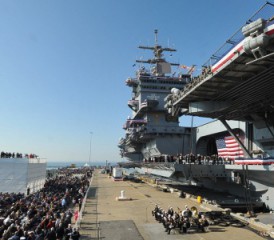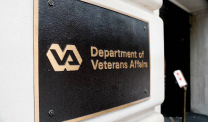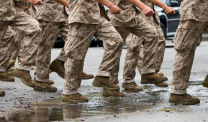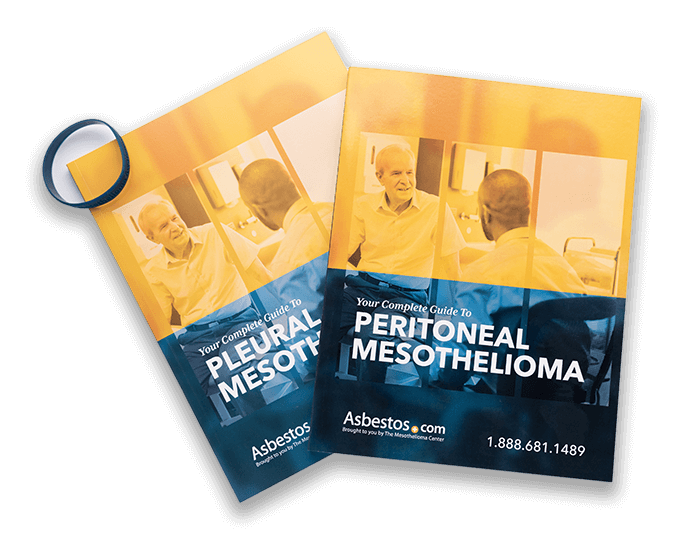Retirement of USS Enterprise a Reminder that Navy Veterans Still at Risk from Asbestos Exposure
Veterans & MilitaryWritten by Tim Povtak | Edited By Walter Pacheco

The USS Enterprise, one of the most decorated aircraft carriers in American military history, was retired earlier this month after 51 years of active duty, spanning both the heights and depths of the Navy’s asbestos era.
The USS Enterprise was the world’s first nuclear-powered aircraft carrier, allowing it to pioneer the defense of American interests around the world, providing military muscle for every major conflict since the Cuban Missile Crisis in 1962.
It was officially inactivated during a week-long ceremony at the Norfolk Naval Station in Virginia, where thousands of former crew members, families and ship builders gathered to say goodbye.
Several major upgrades through the years allowed it to become the oldest active combat vessel in the fleet and the only aircraft carrier of its class ever built. More than 100,000 crewmen served under 23 different commanders.
It took almost four years, 61,000 tons of steel, 230 miles of pipe and tubing, 1,500 tons of aluminum and untold tons of asbestos to build before the Navy dubbed it “The First, The Finest,” super carrier.
Sailors at Risk for Mesothelioma and Lung Cancer
For all its glory and the good it did, it also undoubtedly has led to and will continue to lead to many cases of asbestos-related disease, including mesothelioma, the rare cancer that has struck a disproportionate amount of Navy veterans.
Every United States Navy ship commissioned before 1975 made extensive use of asbestos from bow to stern. It was considered an excellent way to fireproof and insulate the ships and most everything on them.
Engine rooms, fire rooms and pipes throughout the ships, including those that crossed through the mess halls and sleeping quarters, were covered with asbestos lagging. Asbestos was popular because it was chemical-resistant, had good tensile strength and was heat-resistant all qualities that warships needed.
For years, the Navy minimized the threat that asbestos posed to sailors, ignoring many of the scientific and medical warnings about the dangers.
Navy veterans who served aboard the Enterprise in the 1960s, ’70s and ’80s are just now being diagnosed with mesothelioma. It can take anywhere from 20 to 50 years after exposure to asbestos before symptoms of mesothelioma will appear. Too often, the early symptoms often are misdiagnosed as less serious health issues.
New Asbestos Safety Standards
The Navy now requires ships built before 1980 to carry an Emergency Asbestos Response Team (EART) to properly identify and handle potential asbestos exposures, but that requirement has only been implemented in the last two decades.
When ships like the Enterprise aged, the asbestos throughout them became more brittle and more dangerous as the microscopic fibers went airborne. When asbestos was uncovered on the Enterprise while docked, civilian contractors were usually hired to assess and abate the problem.
But because nuclear-powered vessels can stay at sea almost indefinitely six-month deployments were not unusual asbestos discoveries are handled today by on-board EART teams. When the Enterprise was at sea in those early years, though, the asbestos problems were ignored, putting sailors at unnecessary risk.
“A lot of the crew doesn’t even know what we do,” Machinist Mate 3rd Class Derek Begay, EART member aboard the Enterprise, said in a story written by the Carrier’s public affairs office in 2006. “We assemble whenever asbestos is discovered. We come and isolate the area, and remove whatever insulation needs to be removed.”
The addition of the EART teams and the Navy’s attention to the asbestos problem has made a huge difference in safety for today’s military personnel, but it didn’t help those exposed 30 and 40 years ago.
According to the Navy, crew members now are taught to avoid any contact with the asbestos lagging around the ship, and are instructed to report it so the EART teams can handle it appropriately. They come equipped with the same precautionary equipment the respirators, protective clothing, and boots that the trained civilian contractors wear.
“It feels good when you can get out there and do something not a lot of people on board can do,” said machinist’s mate and EART team member Aaron Eads. “It’s good to help out with safety issues like this, and prevent people from getting sick down the road.”
At the time it was built, the Enterprise was the largest ship in the world. Because it didn’t need conventional fuel, it was capable of carrying considerably more aircraft fuel than any other carrier. The nuclear reactors allowed it to set speed records and avoid a need to refuel, when carriers are the most vulnerable to attack.
Retiring the Enterprise reduces the number of carriers in the United States fleet to 10. According to the Associate Press, it will be several years before the Enterprise will be fully decommissioned. It’s nuclear fuel must first be removed, making it unfit for service.







